 back
back
New Technologies of Transition: a look at glitch art through a trans lens
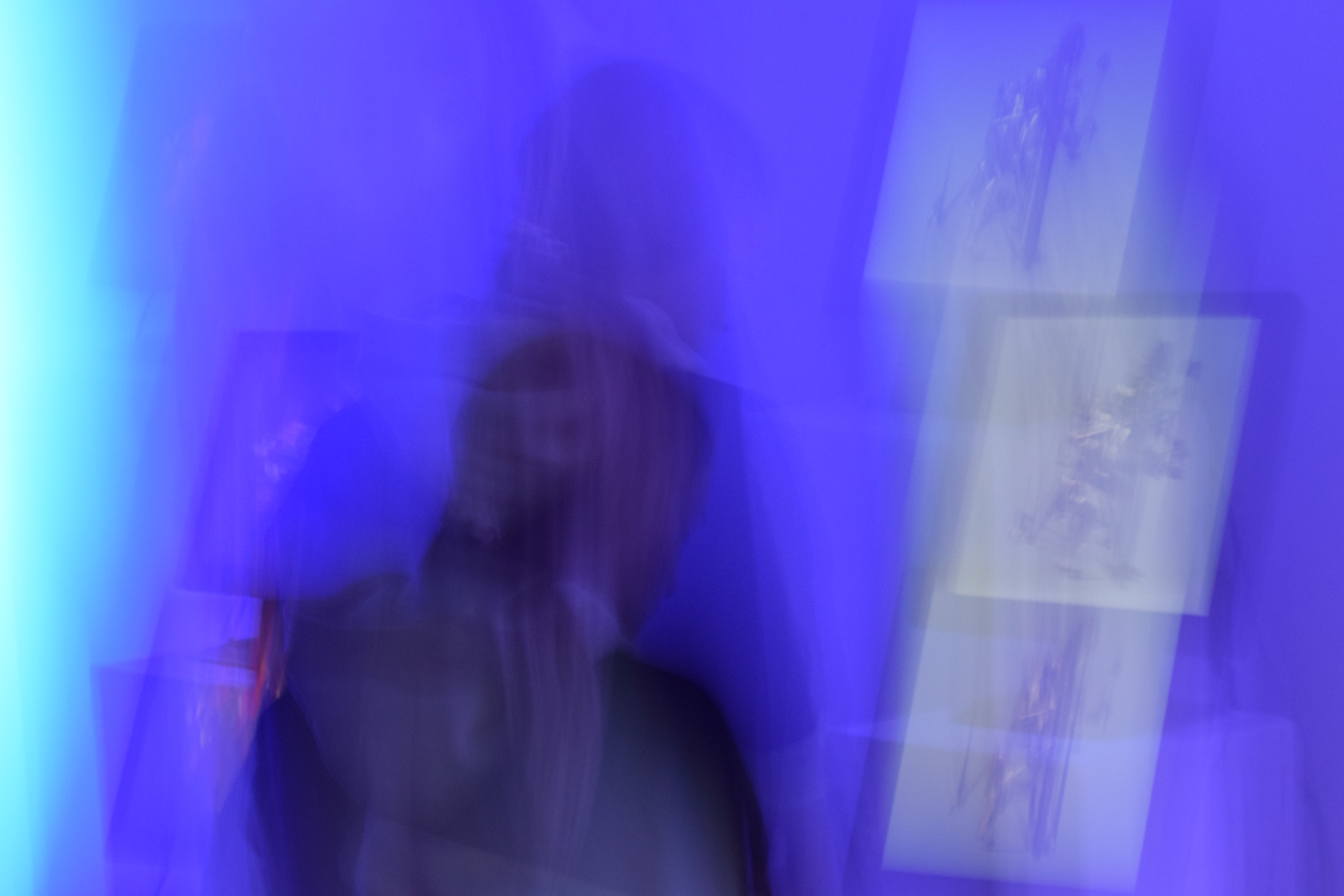
Glitch art is a process of becoming: I see it as a form of alchemy, in which material can be reduced to its basic state and reformed repeatedly. In alchemy, this reordering leads to the philosophers’ stone, or the object by which one could reach perfection of all matter. This great work of alchemy has also been envisioned as the rebis, one being embodying opposing forces, defying categorisation and the gender binary. Both allow for the separating and reintegration of opposing forces in matter and in life. For me, glitch art has been a technology of transition long before I realised I was trans. I was deconstructing and reconstructing my body and soul in various ways for years before I noticed why I was so drawn to it. Through the alchemy of glitch, I was able to imagine a shifting self. I had at my fingertips a way to explore a becoming-body and a new framework for experience. Since this discovery, I have been able to utilise these technologies of transition in more purposeful ways.
I thus see myself, my transition, and my art as glitches, and I see them as alchemy. My life is dedicated to this new alchemical practice, to transform myself and all I see around me through new technologies. This aspect of my practice brings an auto-critical lens to my approach to both my work, and that of others. It becomes a way for me to explore transness within myself and the world around me. I take this approach in line with José Estaban Muñoz’s call to “read with queerness as an expectation” (Cruising Utopia, 2009), in order to build a queer utopia. My response to Munoz’s call is to read with transness as expectation as a way to envision trans futures, which led me to this incredible body of work.
The artists in this exhibition are not necessarily trans, and I make no assumptions as to their identities, but their play with the body, the self, and the modes of becoming in their work speak to me as a trans curator and glitch artist. What I see in the works I have chosen is the ability to recognise these new technologies of transition through glitch, alchemy, and metamorphosis. All of the chosen works create new selves. Most are literal new selves: new bodies, new faces, new movements of limbs, while others explore the metaphysical self through glitch.
In ‘Queer Glitches, Failure Feminisms’ by M. C. Jonet, we see an exploration and metamorphosis of one’s histories, among other complex layers that go towards making the ever-shifting identities we occupy. Their piece evokes aspects of nostalgia for old times and old technologies, while eliciting a discomfort at the newness through glitch and experimental audio. This clash of opposing forces brings us back to the alchemical aspect of glitch art and transness. Jonet’s work spoke to me in ways I couldn’t understand at first, but by reading with transness as expectation I saw the forest for the trees. Her work brought me into a metamorphic state. I swam with her through the layers of identities she broke down and rebuilt through glitch, and I saw myself there too, battling with disparate selves and identities as they come apart and reform anew.
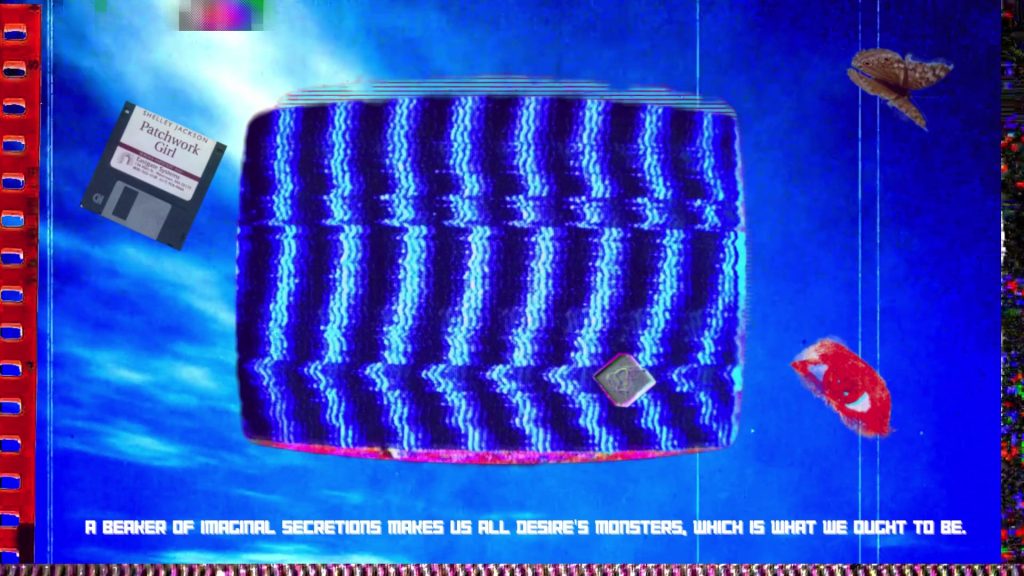
M. C. Jonet [US] : Queer Glitches, Failure Feminisms [2023]
When looking at Felipe Vasconcelos’ piece ‘Fragmented_Walk’, I feel the frustration of keeping pace with the world as your body and mind rebuild around you. He uses code to break down the process of constructing a walking mesh, rebuilding it on the other end with little care for typical or normalised modes of creation. As the video begins we see movement, and nothing is quite recognisable. The polygons start to form around some familiar silhouette. As the body moves and points connect we understand the motion of this being as it walks in painfully slow motion. This body doesn’t care for its abnormal progression, it still moves. It forms as it needs to. The disjointed, erratic, and sharp-edged nature of the form defies the typical embodiment of a walking body. It creates its own path as its rules of construction are broken down and reformed in new and unexpected ways. This body becomes a cyborg, and much like a trans body, its becoming is mediated through scripts and access to (medical) technology. As we see in his work, this mediation can hinder or renew this access in various ways, leading to imagining new realms of becoming.
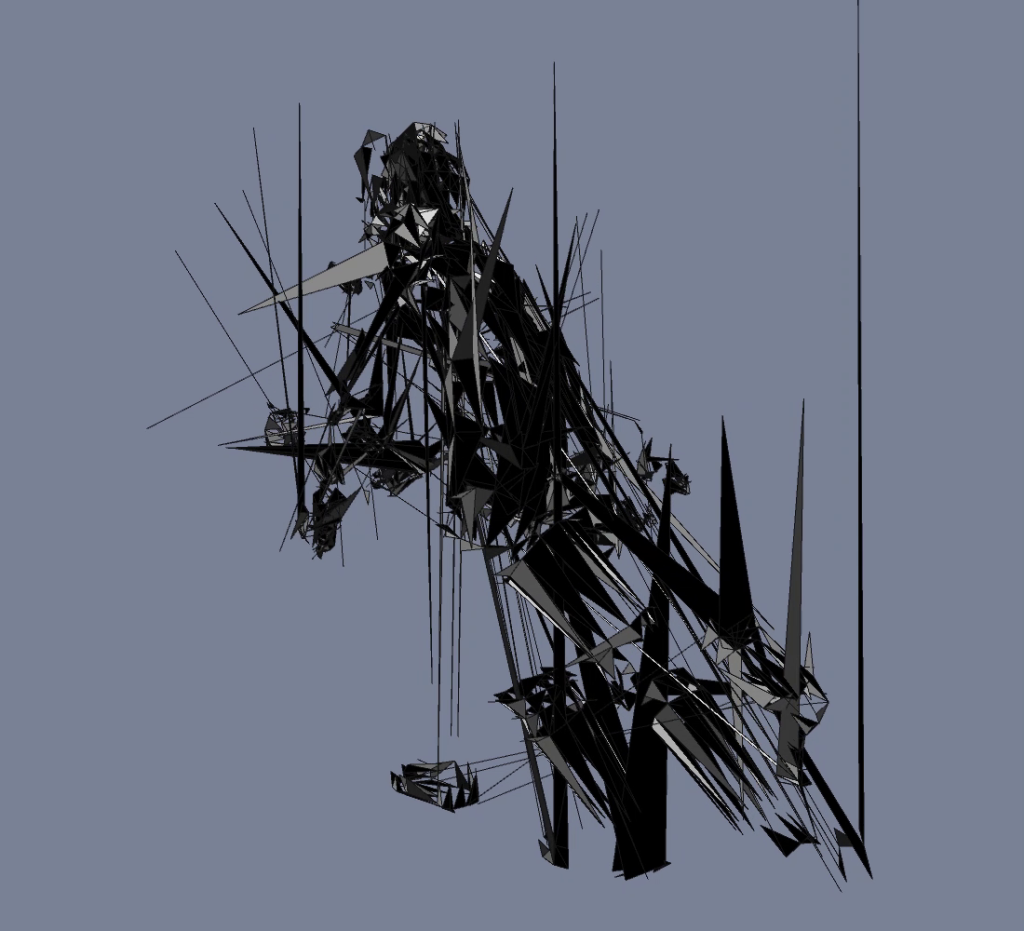
Felipe Vasconcelos [BR] : Fragmented_walk [2023]
Mark Klink’s ‘Heads-Wireframe’ is a perfect example of his body of work. Using open-source software such as Blender, he creates disrupted bodily forms, beautiful in ways beyond the hegemonic normal. He depicts disjointed forms recognisable as human heads, yet their parameters are reconstituted, pushing beyond skin-deep depictions and exploring new dimensions of the self through physical means.
Klink’s work has inspired my own for years now, including learning from his open-source methods of glitching 3D objects. Having shared his methods online, he has allowed for others to recreate it for themselves. A key part of his process thus fosters a generative and relational community, operating outside of gatekept methods of knowledge acquisition and individualist achievement. This social structure allows for new and fluid selves to emerge, a removal of access barriers reminiscent of DIY community transition, which relies on crowd-sourced knowledge to provide care that is medically gatekept. Mark Klink, and other artists such as crash-stop, whose work focuses on accessibility and recreation outside the realm of copyright concerns, create similar communities of practice beyond barriers.
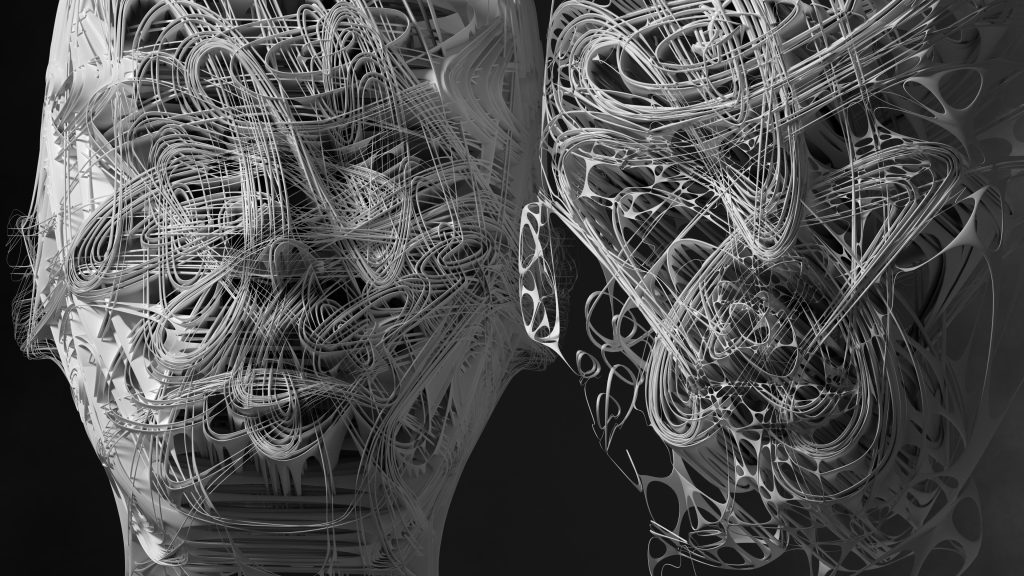
Mark Klink [US] : Heads-Wireframe [2024]
The investigation into the relationship between gender and technology continues in J. Rosenbaum’s ‘Set in Stone’, an AI’s attempt to categorise gender. Rosenbaum trained their GAN (Generative Adversarial Network) on 3D rendered images modeled off of ancient Greek statues with masculine features, prompting it to recreate these ideals of masculinity. They then challenge the GAN by introducing feminine statues and observing its ability to address these oppositional forms, only to interrupt it once again with colourful gender-defying faces. A look at how gender is interpreted by AI technologies, the work brings to question the ways in which we categorise gender and its presentations. In using the imagery often cited by conservative voices as “the height of Western civilization” to subvert and play with gender, Rosenbaum’s category-defying work deconstructs Western foundational myths about bodies and embodiment.
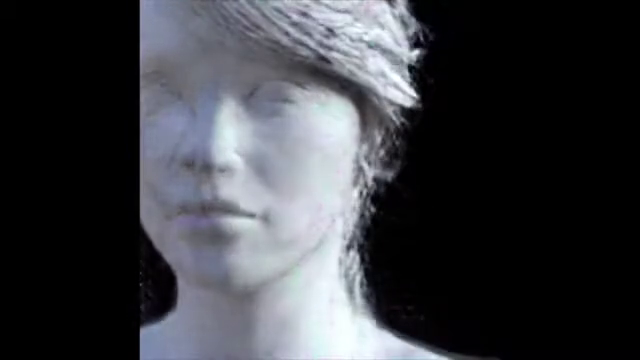
J. Rosenbaum [AU] : Set in Stone [2021]
The image of the body is removed from the physical body itself in Edwin “urchin” Häger’s work ‘Self-Portraits’, allowing the artist to reconstitute aspects of its material into new forms. Denying categorisation, he embodies his own self through the use of code to rewrite how the body exists in the digital space of the video. An image of a body alone, if you, like me, spend way too much time reading into it, can elicit what Häger illustrates so clearly in this piece. His body, converted to code, is transmuted through new lenses and reimagined to communicate what he feels in its occupation. The beauty of the colourful shapes appearing over the body’s image shows an appreciation for the ability to transform and to share internal understandings with the world. This work, to me, demonstrates the beauty in the utopian possibility of metamorphosis. Häger brings us through the physical being of the body and into the metaphysical space in which identity, relation, and meaning shift constantly and compellingly.
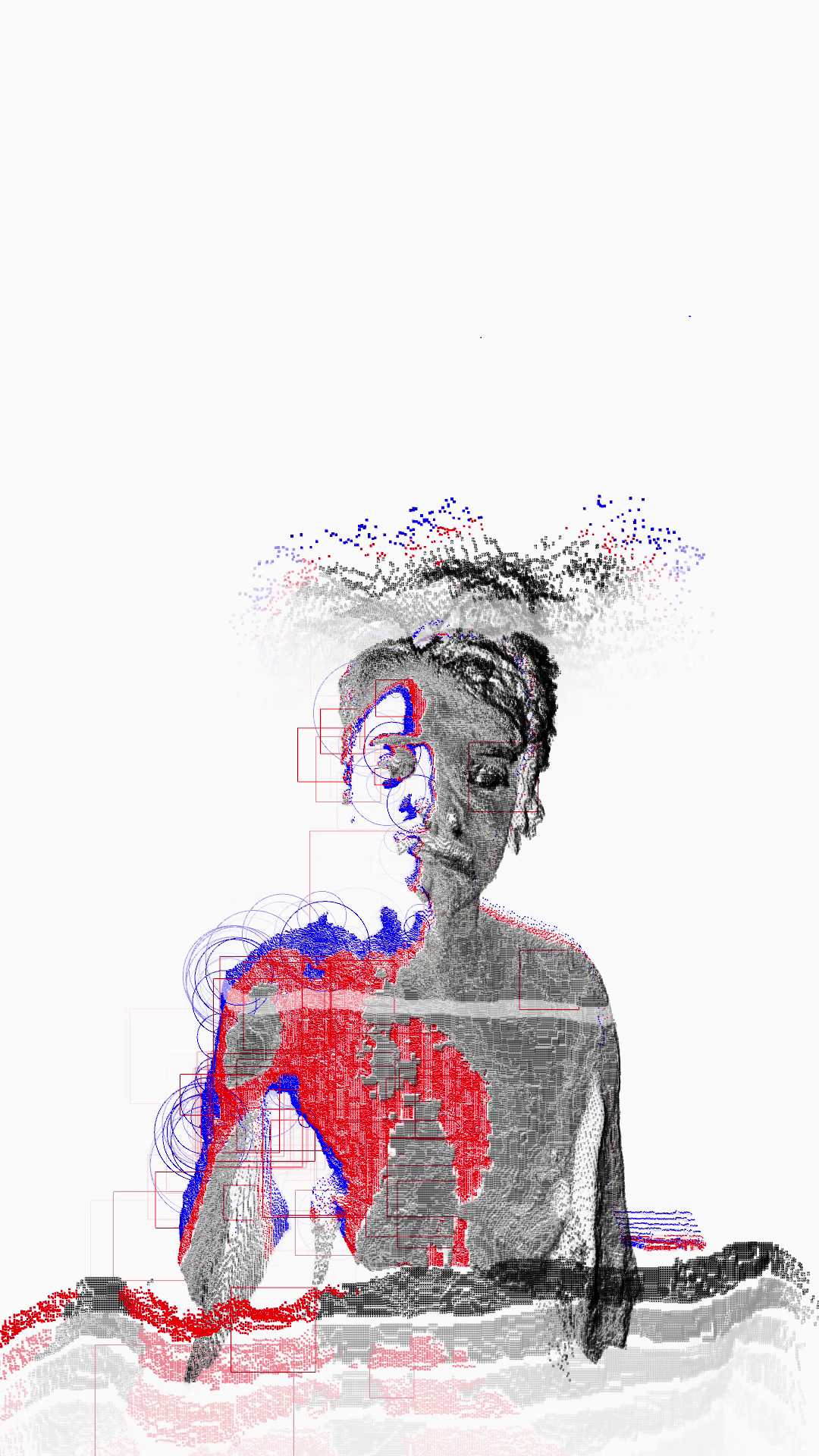
Edwin "urchin" Häger [SE] : Self-Portraits [2023]
Similarly, Micah Alhadeff’s work ‘Fracture_Twenty-Five’ discusses new formations of the human body in digital space. By bringing the body into the virtual space he questions how we shift our perceptions of it. A trans person from a digital age will often find themselves testing the boundaries of gender and social roles within digital realms before exploring the same in the physical world. ‘Fracture_Twenty-Five’ evokes for me this tentative exploration of gender in digital space and the use of the digital to reform the self as a trans rite of passage. From these explorations we can bring new understandings of ourselves into our AFK (away from keyboard) lives. Through this the digital space glitch becomes the alchemical tool to allow us the separations and reinvigorations of seemingly disparate parts of the self. The digital influences the real, and the glitch becomes alchemy when we see this artwork not only as its own piece of beauty, but existing in dialogue with the AFK self and its forms of becoming.
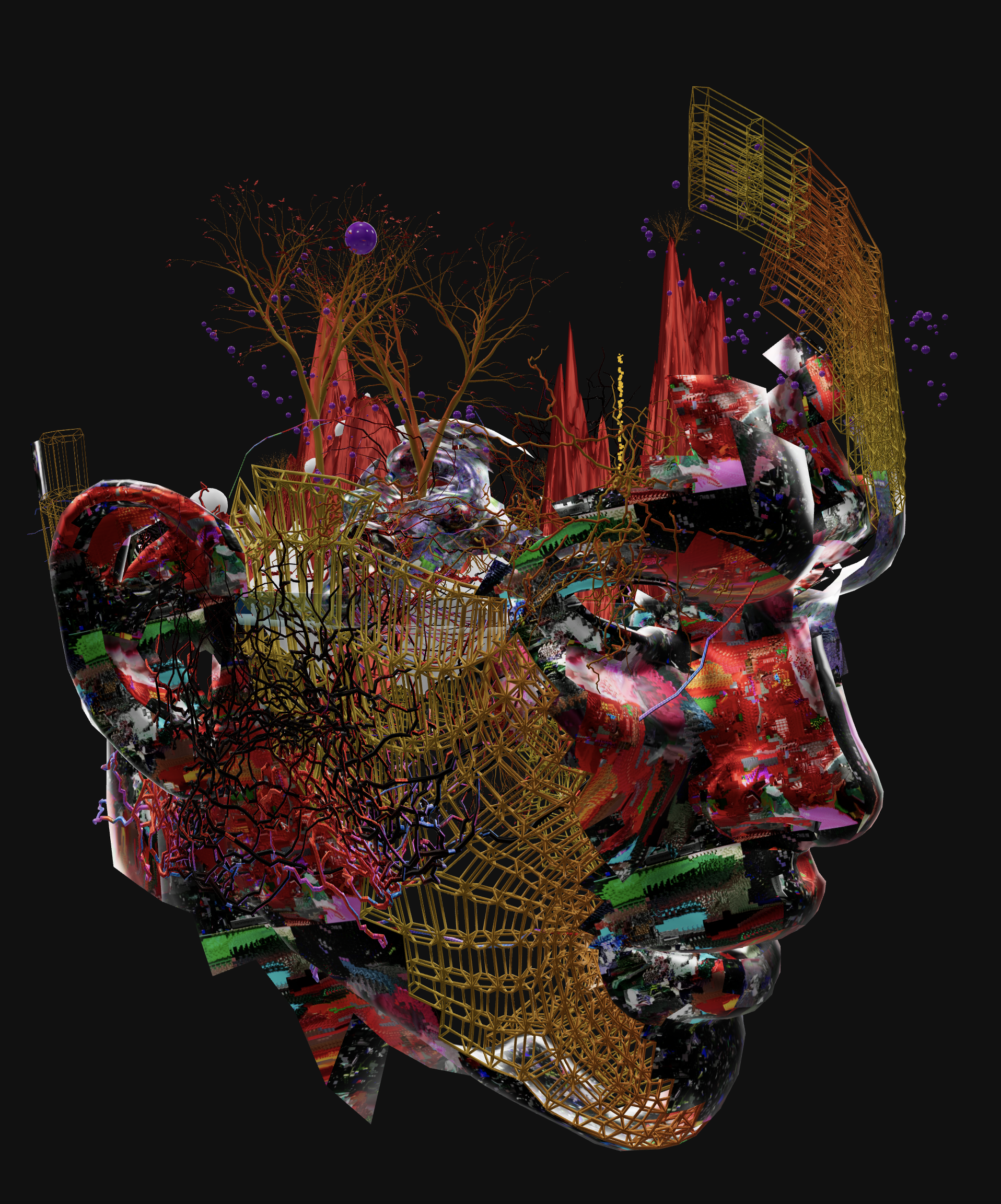
Micah Alhadeff [US] : Fracture Twenty-Five [2022]
From this we flow nicely into Estelle Flores’ ‘Part/Ways’, an exploration of this same topic in the videogame The Sims 4. A game renowned for its exploration of diverse digital avatars, Flores utilises this digital space to pose questions about the influence these avatars have on our AFK lives. The becoming of the self takes center stage in this odd and alluring artwork. We can see a cyclical vision of self and avatar and their influences upon each other: the avatar deforms and reforms on screen as the text-to-speech voice’s words are metamorphosed, both through the audio effects and the order of the words. Sentence fragments play off each other, forming new statements, all exploring the alchemical breakdown of component parts of the self and reconstruction of disparate selves anew. The voice meets itself halfway, evoking a discussion of the influence of the avatar on the AFK self, and, to me, reminiscent of the processes of alchemy, metamorphosis, and glitch.
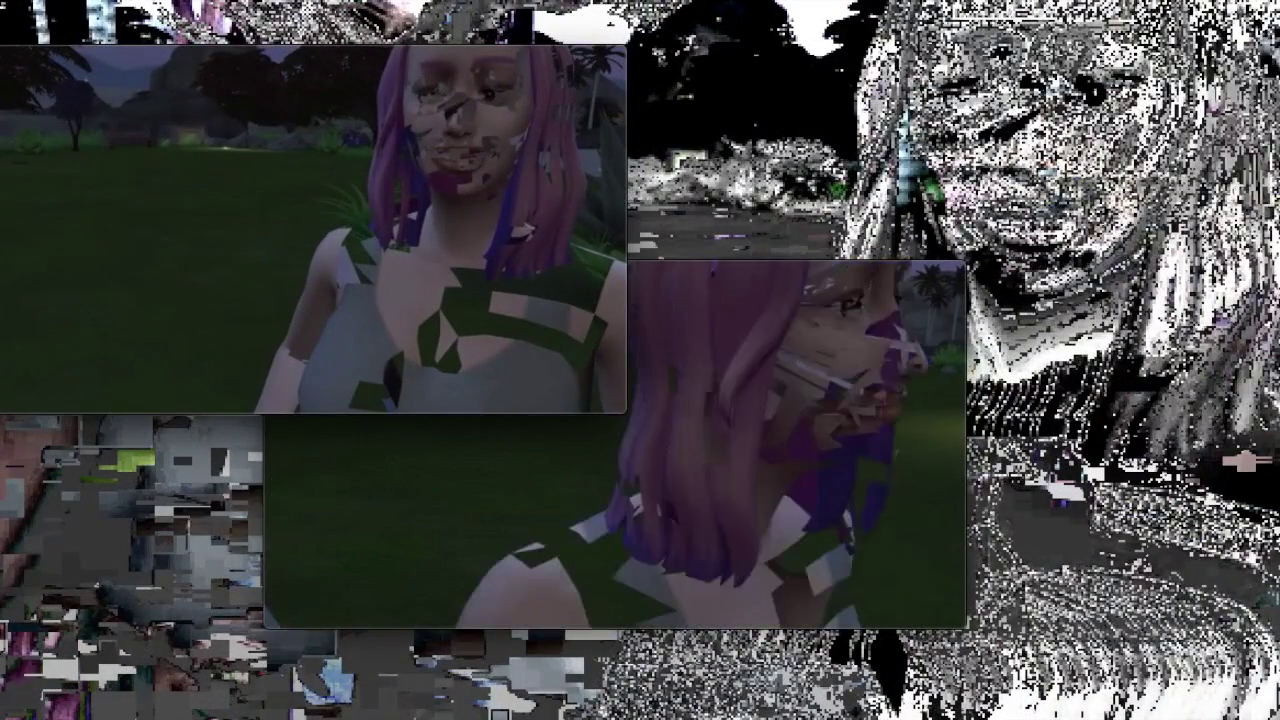
Estelle Flores [BR] : Part/Ways [2023]
I have already discussed how I approached this archive with transness as an expectation, but Error_719’s piece requires no imaginative practice to see a compelling depiction of trans lives. ‘Jardín de hembras (Garden of females)’ uses glitch to showcase a celebration of transness. By focusing a trans person within the imagery of the glitch, the artist highlights beauty and excitement in living as one’s becoming-self. The artist lenses their being through datamoshing, bleeding one frame into the next as their life unfolds before us in beauty and joy. The glitch found in this piece seems to highlight and celebrate the otherness of this character’s life. I have found in my own work, and I feel it may apply here, that a playful use of glitch and the non-conformative mode of being that is transness used together becomes almost humorous, and certainly joyous.
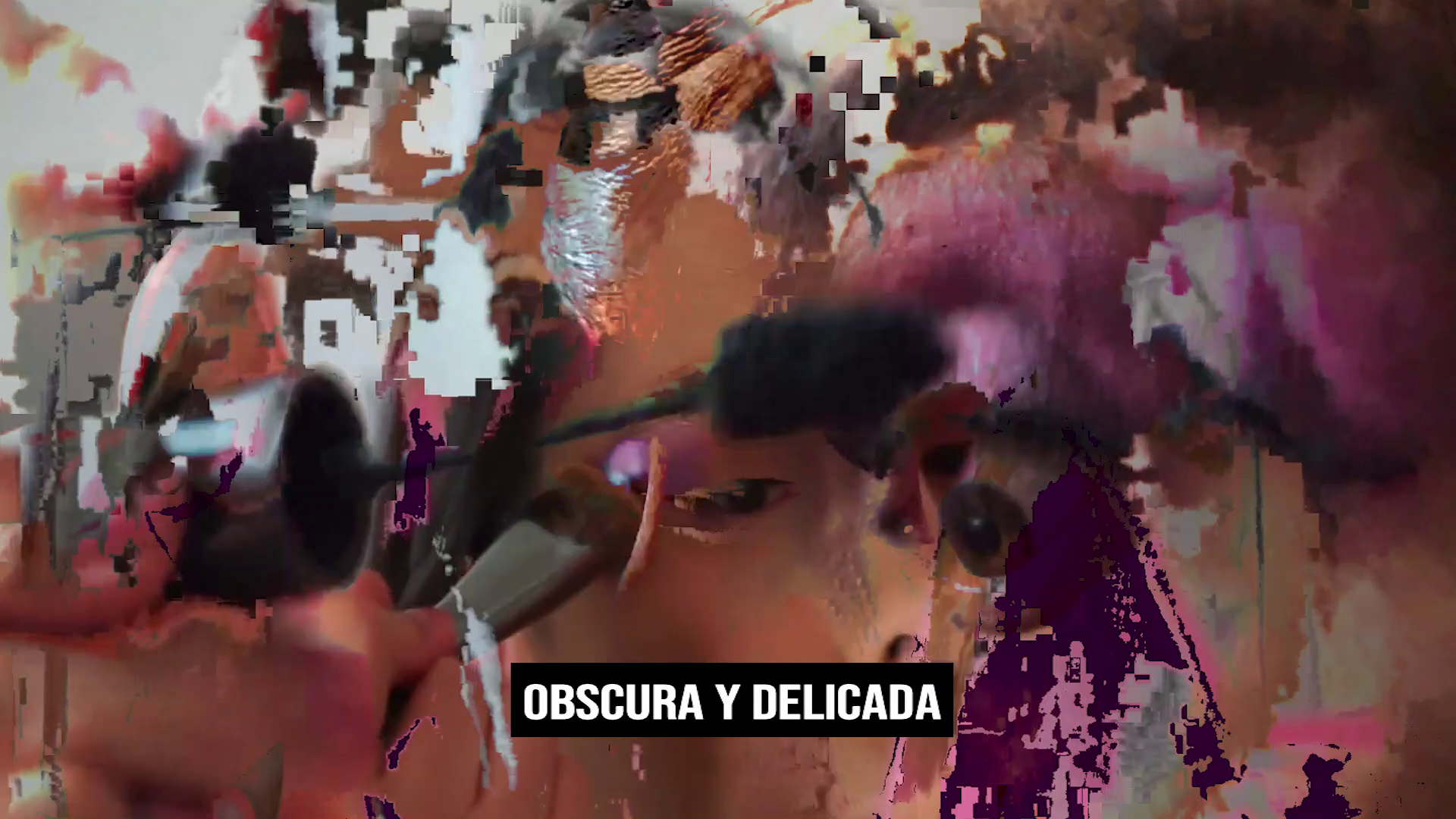
Error_719 [MX] : Jardín de hembras (Garden of females) [2022]
From my readings of these works, I hope it is evident that there is a freedom to be found in reading with transness as an expectation. Glitch artwork, I feel, is rife with readability in this form. With this lens we can envision queer utopias discoverable in all manners of work, but in this case, and with many thanks to FormatC, KA-MATRIX, and the ZILIK gallery, we see trans futurities in the FUBAR archive. It has been an honor to view the works of so many artists, and there were so many I couldn’t include in this selection, but I thank you all for your contributions, and for the chance to imagine a trans utopia through your work.
Curatorial concept & statement: Indigo Woolfrey a.k.a mother_woolf
Editing: Taylor Follett
Cover photo by: Noa Barić / KA-MATRIX
This text is part of Fubar 2025 archive and the FLAG10 production by Format C Artist Organization and KA-MATRIX Association, financially supported by the Kultura nova Foundation, the Ministry of Culture and Media of the Republic of Croatia, the City of Karlovac, Karlovac County, and the City of Zagreb.



